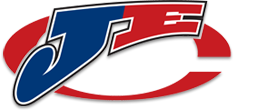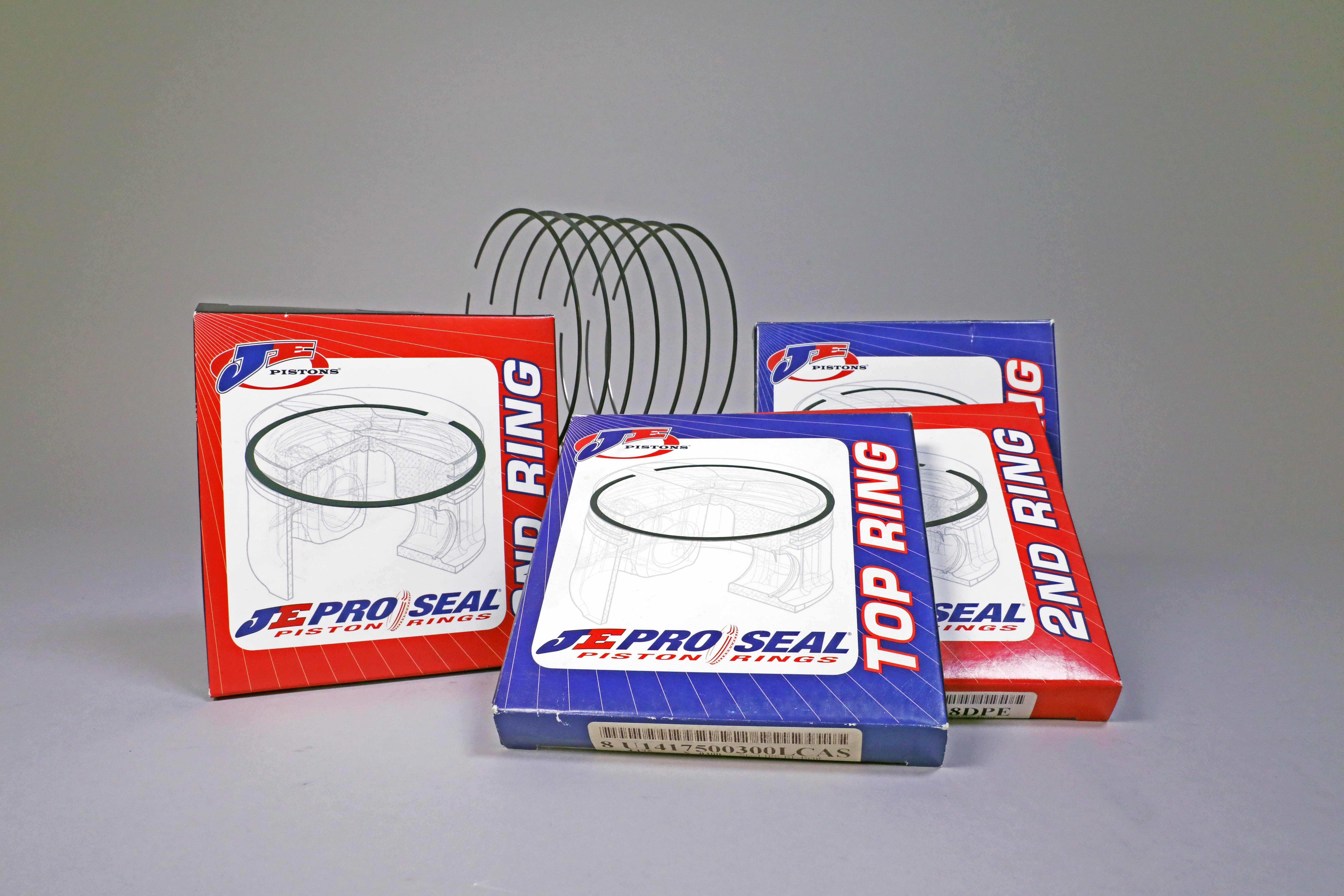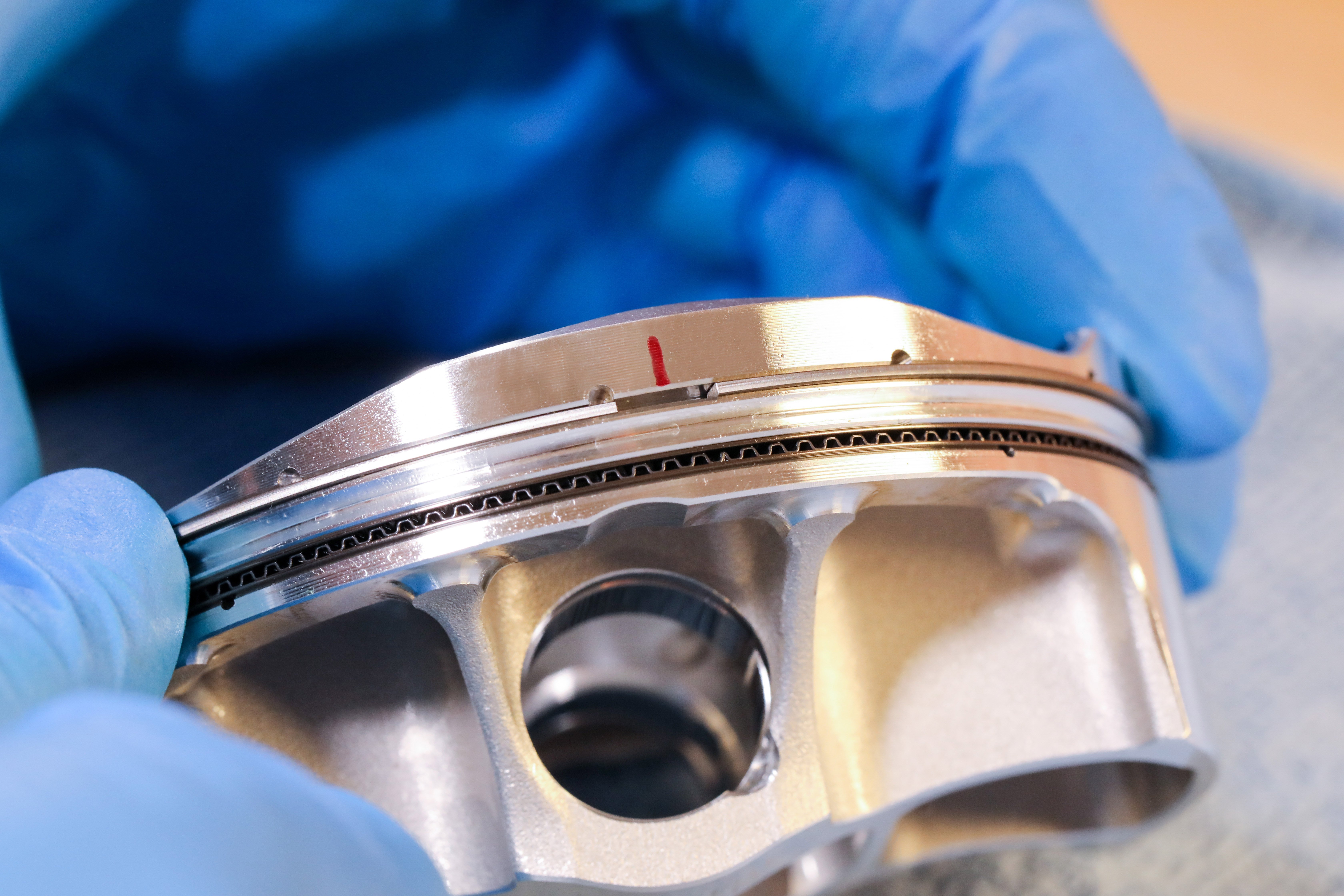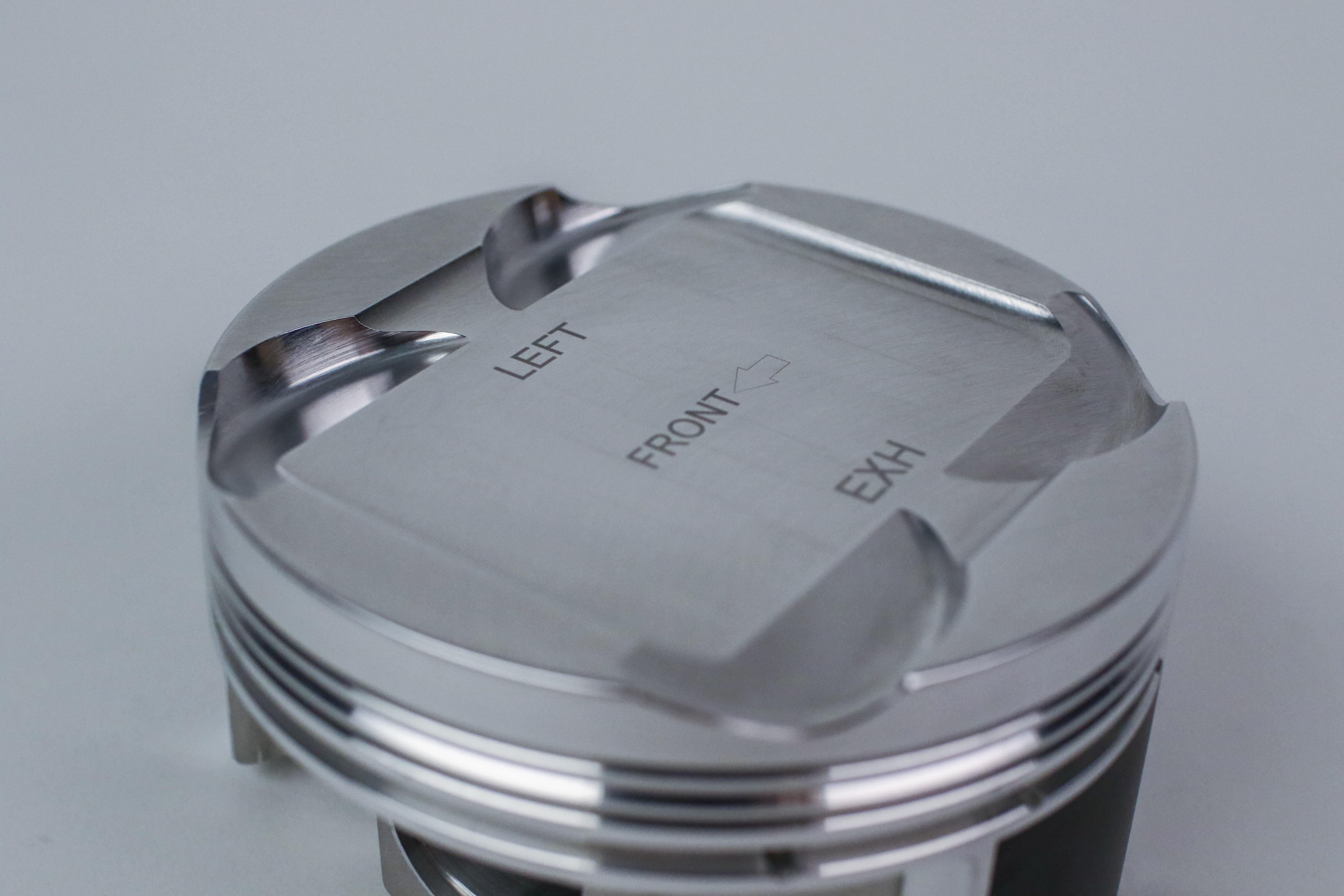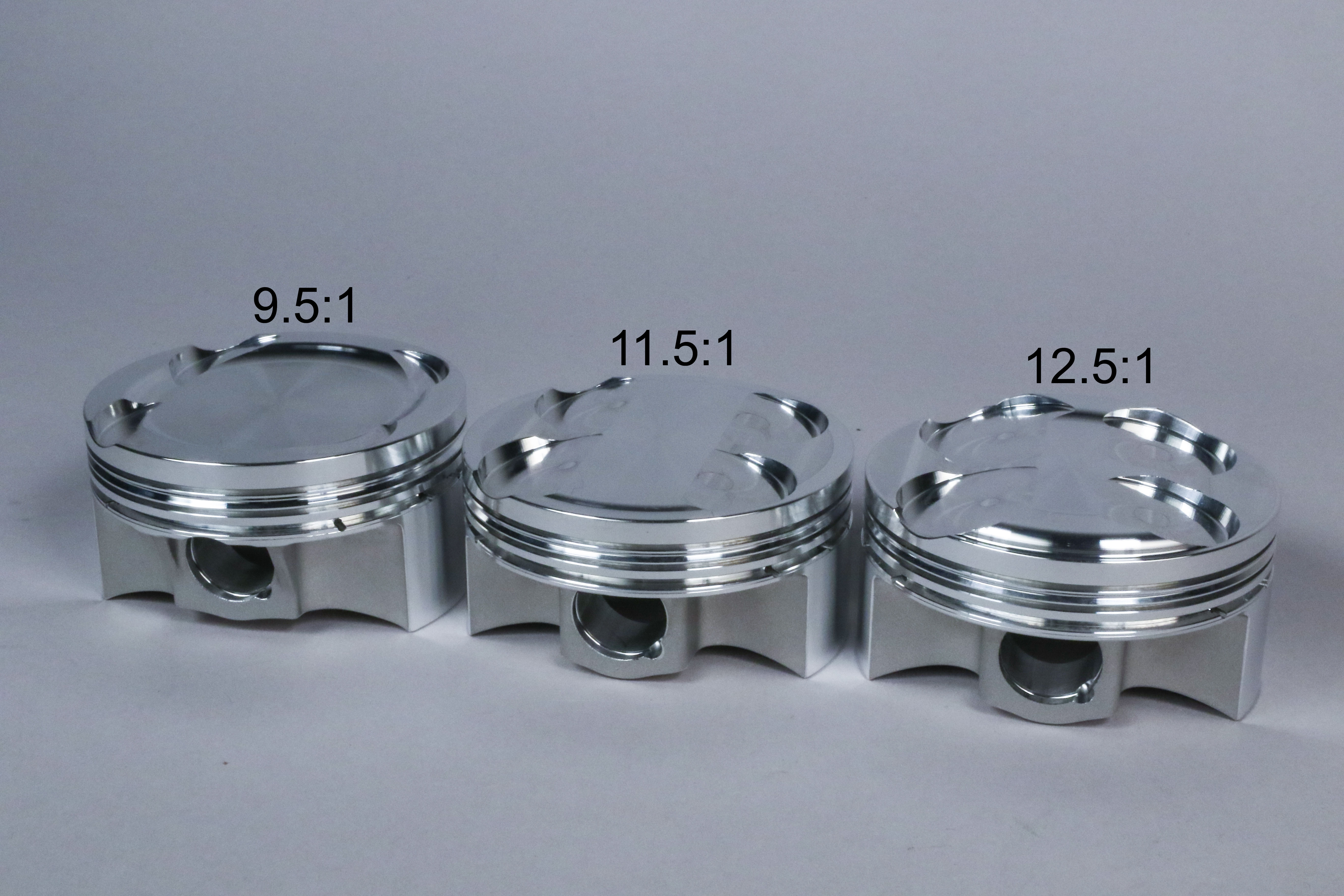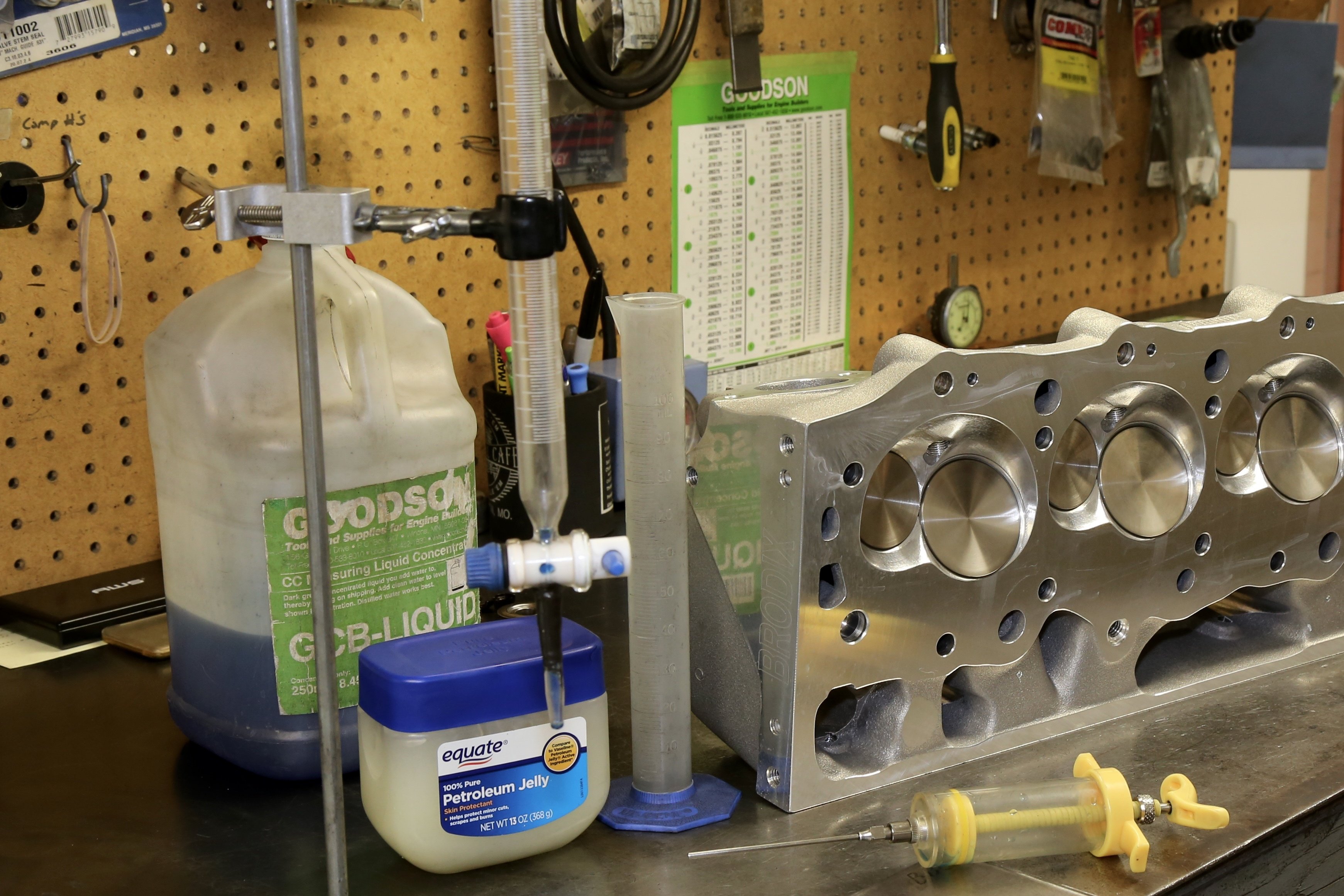Piston rings play a vital role in engine operation and there are a plethora of variations in design, materials, coatings, and thicknesses to make them perform at a whole new level.
Any way you slice it, piston rings are a drag. Cutting the rings too thin to minimize drag risks squeezing cylinder pressure right past them and into the crankcase. Cutting the rings thick to seal the cylinders nice and tight risks sending frictional horsepower loss through the roof. Tricks like matching low-tension rings with vacuum pumps, and drilling gas ports into the ring grooves, attempt to strike the ideal balance between friction reduction and cylinder seal. These proven techniques work reasonably well, but what’s the next step?
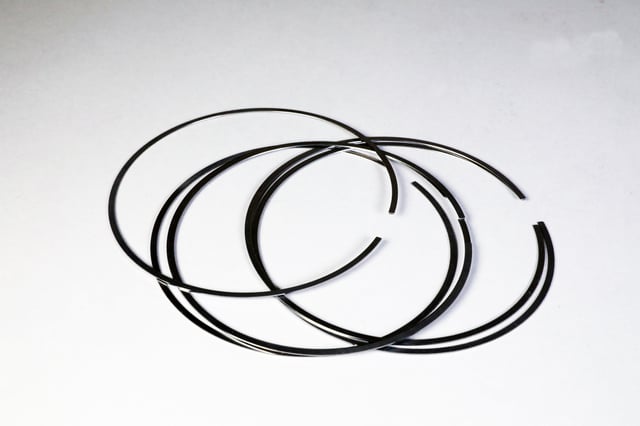
Enter JE Pistons’ custom ring program. JE has been producing one-off ring sets for years for top tier racing teams, but that technology is now available to everyone. Racer's looking for an extra edge to their racing program can now spec out hot-rodded ring options to maximize their combinations.
In the realm of NHRA Pro Stock and NASCAR Cup, where the front lines of engine development move forward one horsepower at a time, race teams have long sought to minimize frictional power loss. “Our Critical Tolerance ring program was created to meet the demands of top-tier racing. At this level, flat rings, flat ring grooves, tight tolerances, and tight clearances are proven to make more horsepower,” Alan Stevenson of JE Pistons explains. “Remember when 1.0mm rings seemed impossibly small? Top race teams are now using rings nearly half that size. As such, exotic ring materials and surface treatments are required, in addition to back-cutting, grinding, and lapping to achieve the required flatness.”
That emphasis on flatness plays a significant role in optimizing ring seal. In order to prevent ring flutter and a loss of seal, these ultra-thin rings must fit very tightly within the ring grooves to ensure stability. Consequently, extremely flat rings and ring grooves are essential. “Pro Seal Ultra Finish Rings (UFR) are held to the most exacting tolerances in the industry. Specifically designed to complement our Ultra Groove piston option, these rings are finished to within +/- 0.00005-inch axial height to deliver unprecedented ring groove fit and sealing properties,” Stevenson adds. Since rings naturally spin inside the ring groove, as ring-to-groove clearance decreases, friction within the groove must also decrease to allow the ring to rotate freely. “The lapped Ultra Finish process also yields extremely flat, smooth ring sides that result in a surface finish of better than 4Ra.”
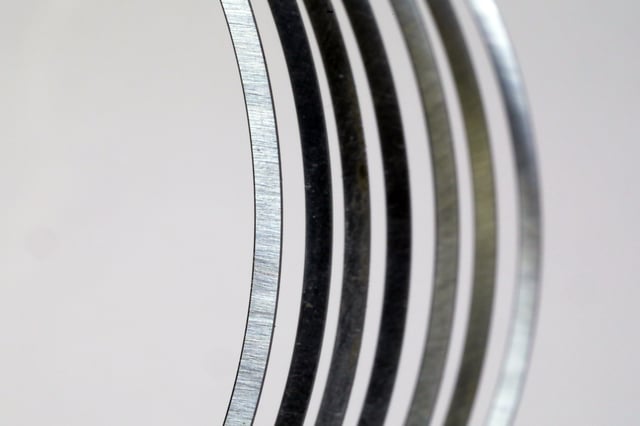
Raw Material
As with most cutting-edge innovations, not all trade secrets are open to discussion. The exact material used to manufacture JE’s custom rings is one of those secrets, but nevertheless, Stevenson offers some interesting insights. “We can’t tell you what material we use, but the purity of that material is critical to durability. Much of the strength necessary to handle the heat and power of extreme race engines at such thin ring sizes comes down to the purity of the material,” Stevenson explains. “Custom rings are like custom wrist pins. A standard wrist pin that comes with a regular shelf piston is made from low-carbon steel and costs $7 or $8. For just about any naturally aspirated or sportsman level engine, these pins work fine. When you get to the Pro Stock or NASCAR Cup level, these guys spend $80-$100 per pin. That’s when you start getting into more exotic materials like martensitic or maraging steels. Custom rings are very similar. They’re manufactured in small batches using a boutique process from expensive raw material.”
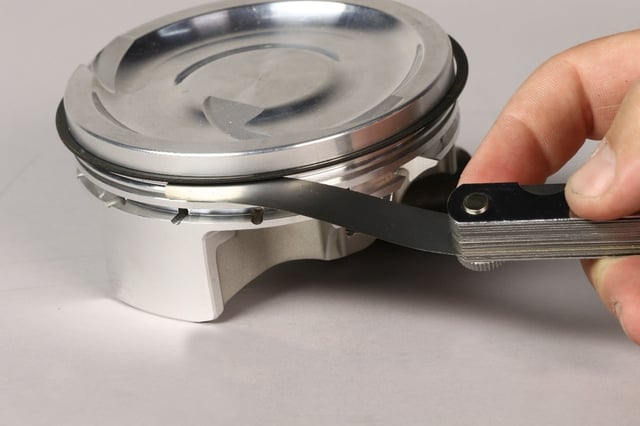
Coatings
Reducing the surface area of a ring is great for reducing friction, but pushing the limit too far can easily compromise ring seal. To combat this, JE applies advanced coatings to its Pro Seal Ultra Finish Rings. “With our custom rings, the barrel of ring—which is the surface that contacts the cylinder walls—doesn’t have enough contact area for adequate sealing. Consequently, we subject the rings to a plasma vapor deposition (PVD) process,” Stevenson reveals. “PVD has certain ingredients that promote sealing, and it is applied like a spray where the ring acts as a substrate. It was originally developed for million-mile diesels where the rings are obviously much larger. The extreme cylinder pressure of a diesel engine is much higher than anything in the racing world, so the application of PVD crosses over very well to race engines. All you’re doing is taking the same concept, and applying it to as thin of a ring as possible.”
Horsepower
All this talk about super-thin ring packages and reduced friction is great, but how much horsepower is it all worth? “Everyone wants to maximize power and minimize blow-by, but a lot of the data out there isn’t commonly shared. We look at what people continue to order to get an idea of what works and what doesn’t,” Stevenson explains. “One of our NASCAR customers replaced one of their existing piston and ring packages with our custom piston and ring sets. In a straight A-B-A test, they picked up 12 hp. For a highly developed combination like a Cup motor, that’s an impressive gain. The same team did another test with our UFR rings on another company’s piston and picked up 6 hp. They wanted to know how much hp was coming from the ring and how much hp was coming from the piston. Ultimately, we know how to package everything together to get most out of the entire piston and ring combination.”
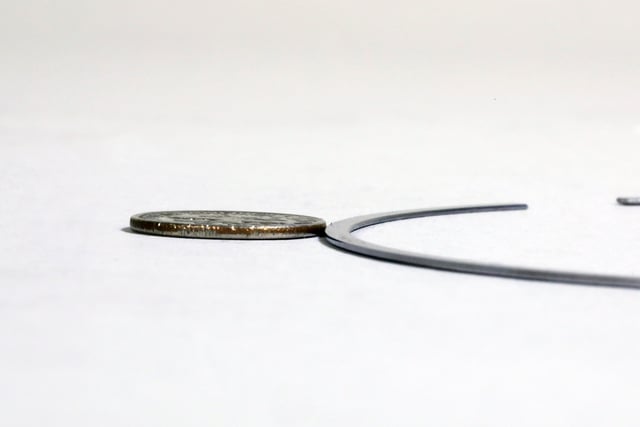
Tolerances
As ring size decreases, the need to maintain tight tolerances becomes even more critical. With a standard 1/16-inch ring, it’s not uncommon to have up to a thousandth of an inch of variation in thickness around the circumference of the ring. With JE’s custom UFR rings, tolerances are held to tenths of a thousandth of an inch. “Since the ring spins inside the ring groove, unless you have a consistent clearance all the way around the piston, the ring can stick or even micro-weld inside the groove. In a typical circle track or sportsman level motor, you can just put a thousandth of an inch of clearance in the ring groove and everything will be OK,” says Stevenson. “At the Pro Stock and NASCAR Cup level, the axial clearance is half of a thousandth of an inch, so it’s absolutely critical to get the tolerances for ring flatness down to a tenth of a thousandth of an inch. It takes a lot of time and money on the manufacturing side to achieve these tolerances, but that’s also where the horsepower gains are at.”
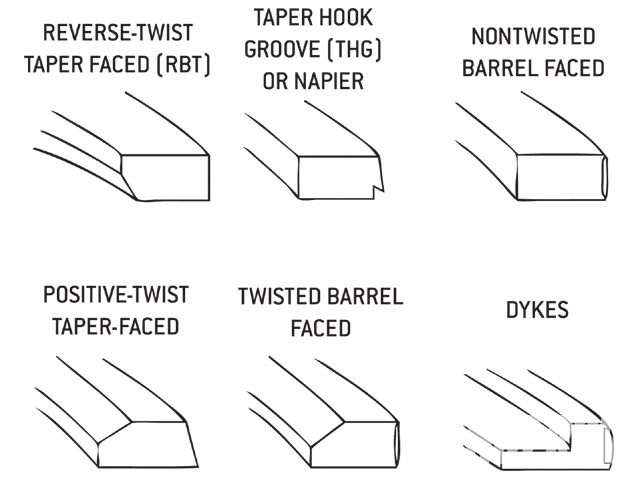
Conformability
While horsepower is the obvious reason why top race teams use JE’s custom rings, manufacturing a ring capable of performing at such a high level is an extremely labor intensive affair. It all starts with a premium base ring that conforms to the surface of the cylinder bore far better than a standard ring.
The better a ring conforms to the cylinder walls, the better is will seal. “You want the rings to be light-tight. That means that when you put a piston and ring in the bore and shine a light behind it, none of the light leaks past the rings,” Stevenson explains. When you’re chasing maximum ring seal and crankcase vacuum, not having a light-tight seal is death. Gas ports will help sealing in the power stroke, but the rings will still pull away from the cylinder walls on the other three strokes. When that happens, dry sump vacuum will drop and the pump will pull exhaust gas right into the crankcase. With our UFR rings, the curvature and conformity is dead-nuts accurate for a light-tight seal.”

Manufacturing
By necessity, machining base rings into a finished UFR ring is a very time consuming three-step process. “Every race team has a different set of requirements, but all of JE’s UFR rings undergo back-cutting, grinding, and lapping. The grinding and lapping operations make it possible to achieve such tight axial clearance,” says Stevenson. “Grinding is the most time-intensive process because there’s only so much material you can remove before you start removing the PVD. You can only remove extremely small amounts of material on each pass or you run the risk of damaging the ring. The processing time is huge, but the payoff is a 4 micro-inch finish and a much more consistent axial height. Once you tighten up the tolerances past a certain level, that’s where the real time and costs come in. At JE, we have had to develop new manufacturing, inspection, and equipment maintenance processes to achieve these tolerances. It’s a lot of work, but that extra effort is the difference between winning and losing.”
